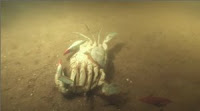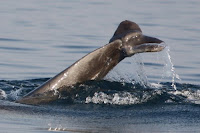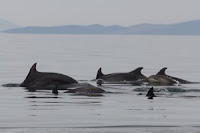
Today I was cleaning our research boat when the postman stopped by and informed me that a big box was waiting for me.
After my duties I went to the post office with no idea of what the box could be. I wasn't waiting for anything.
With a nice 'kalimera' the guy gave me a big yellow box sent from Germany to the Tethys research station of Galaxidi. Our first volunteers Gunda and William, who spent with us a lovely spring week immediately came to my mind.
With a happy childish face I opened th box and found: 1) a very useful kettle for tea-addicted staff members, 2) the book 'The Swarm' with a dedication to future IDP volunteers, 3) a bottle of excellent 'Siegburger Liquer' for pleasant drinks after dinner, 4) a postcard from Siegburg, and 5) a long letter by William describing his experience in Greece and his thoughts on environmental conservation.
What an exquisite surprise! A very special thank you to Gunda and William!
Silvia Bonizzoni











